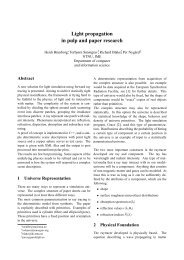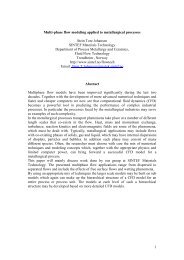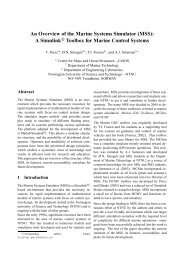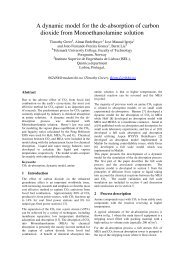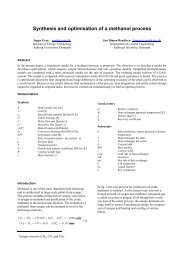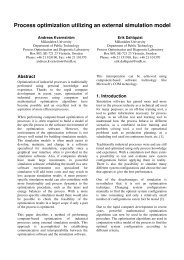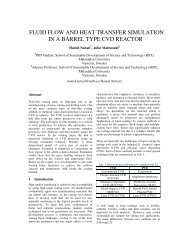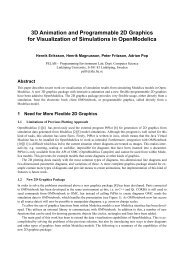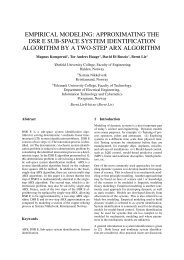detailed programme - SIMS - Scandinavian Simulation Society
detailed programme - SIMS - Scandinavian Simulation Society
detailed programme - SIMS - Scandinavian Simulation Society
You also want an ePaper? Increase the reach of your titles
YUMPU automatically turns print PDFs into web optimized ePapers that Google loves.
in geothermal modeling. These wells along with other observations, indicate that<br />
the roots of the geothermal systems in the volcanic active zone in Iceland are at<br />
shallower depths that previously believed. Thus, the structure of existing<br />
numerical models have to be reconsidered and heat sources have to be included<br />
into the models.<br />
Including the heat sources into the models does also challenge the practice of<br />
assuming that the geothermal system is in a steady state or natural state, since<br />
intrusions in the roots of volcanoes are not steady phenomena. Periods of high<br />
intrusion activity are known in volcanic systems in Iceland. In an improved<br />
modeling scheme the heat sources should not only be included in the model along<br />
with the entire water circulation the should also be time dependent.<br />
Authors: Gunnar Gunnarsson, Edda S.P. Aradóttir<br />
Organization: Orkuveita Reykjavíkur<br />
Paper 19<br />
Title: Modeling Two Phase Flow and Phase Change in Liquid Dominated<br />
Hydrothermal Systems<br />
Keyword: reservoir modeling, two-phase flow, phase change, porous medium,<br />
scientific computing<br />
Abstract: A new modeling approach of two phase fluid flow in geothermal<br />
reservoirs is presented in the paper. The flow is assumed to be liquid dominated,<br />
but vapor will travel alongside the liquid at the same speed if present, which is<br />
common for hydrothermal systems. The model also accounts for phase changes,<br />
but they give rise to numerical instabilities due to the discontinuities in physical<br />
properties. An analysis is presented here on how to treat those instabilities in<br />
order to ensure a stable solution. The entire problem is then formulated and<br />
solved by using a highly customizable set of C++ libraries and tools, collectively<br />
named OpenFOAM, along with an implementation of the IAPWS-IF97 standard for<br />
the properties of steam and water.<br />
Preliminary results from a more general modeling work on hydrothermal systems<br />
are presented in simple case studies, showing the basic abilites of the<br />
programming platform to solve large three dimensional problems for flow in<br />
porous media. It is concluded that the modeling framework is both flexible and<br />
efficient, and an added benefit is that it is under constant improvement by a large<br />
group of developers and incorporates cutting edge technologies in numerical<br />
analysis for mathematical modeling.<br />
Authors: Larus Thorvaldsson, Halldor Palsson<br />
Organization: University of Iceland<br />
Paper 16<br />
Title: Estimation of slip ratio correlations for two phase flow in Icelandic<br />
Geothermal Wells<br />
Keyword: Two phase flow, Slip ratio, Pressure drop, Geothermal well



